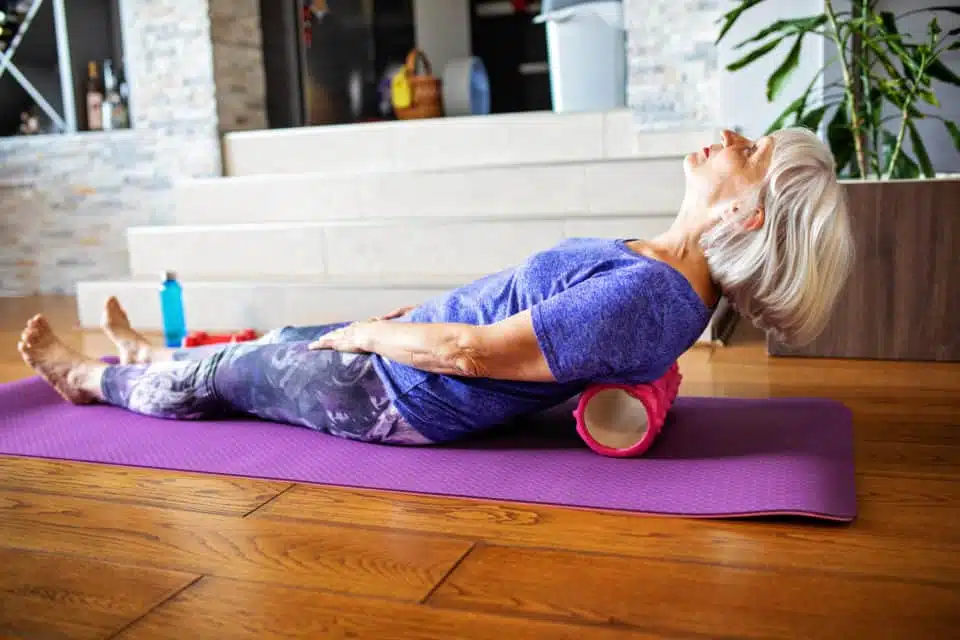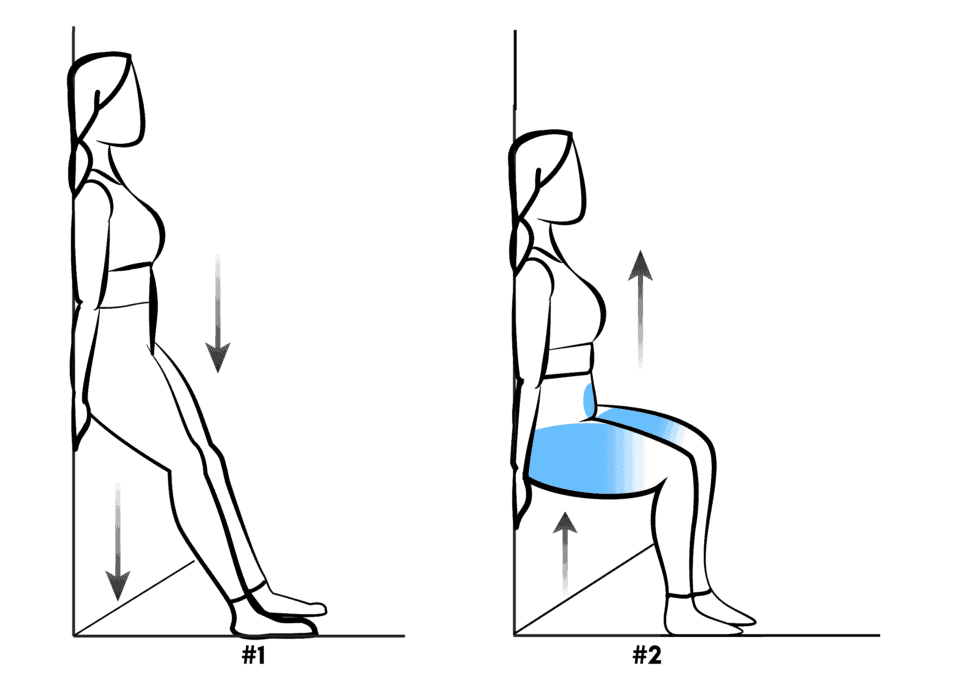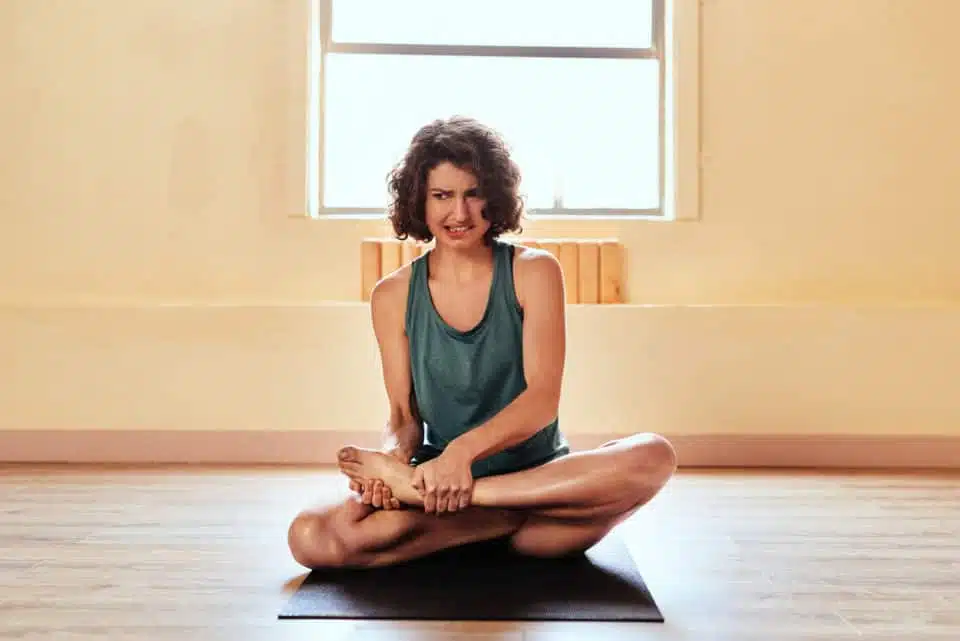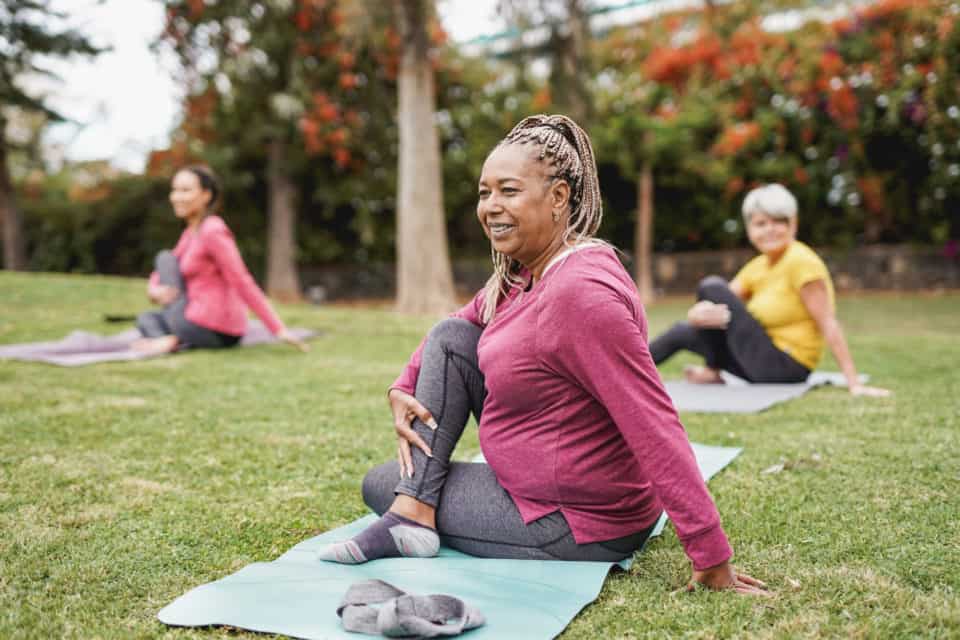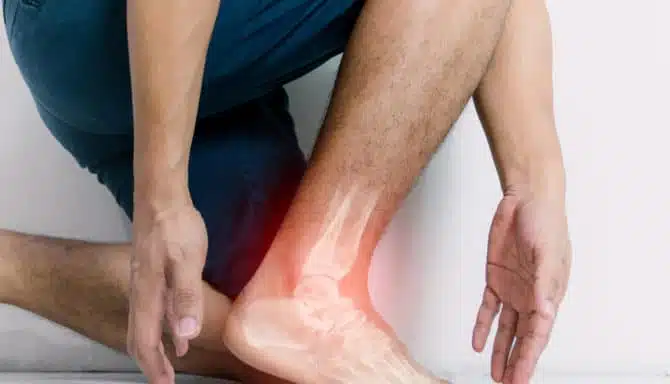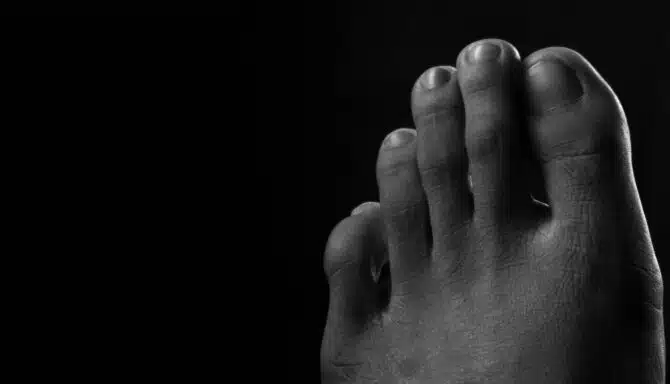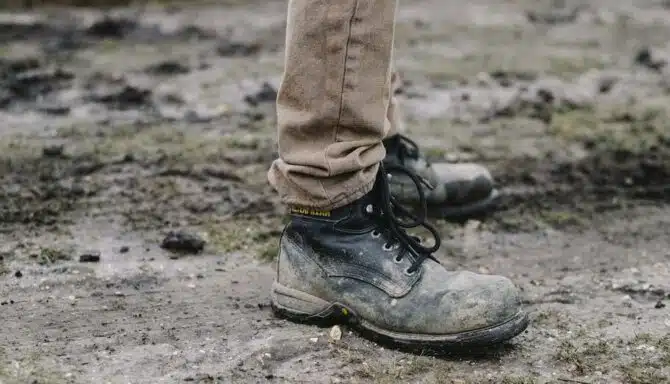Entering the world of physical fitness can be intimidating. If you’re not used to regimented workouts and stretching routines, you can bite off more than you can chew and injure yourself early on. That’s why it’s a good idea to educate yourself about general exercise tips to avoid injury before you set your sights on achieving your goals. To help you out, we compiled our top tips and tricks to help you avoid injury and take the fear out of starting your fitness journey.
If you’re eager to start working out, let’s get to it! Here are 7 exercise tips to avoid injury:
- Identify the muscles you’re working
- Watch Your Form
- Don’t overextend or force yourself
- Try different stretches and exercises
- Rest between sets
- Know the difference between dynamic and static stretches
- Start small and do what you can
1. Identify the Muscles You’re Working
Knowing target muscles will help you achieve results and avoid hurting yourself. This is the case for both weight training exercises and stretches. While you work out, you should visualize the muscles you want to work out and focus on them. These are the areas you’ll want to “feel the burn” as you perform the exercise. If you’re unsure what target muscles you should be working on, you could easily strain a muscle you weren’t supposed to use.
Exercises should have target muscles in mind. For instance, strengthening exercises like wrist curls and bicep curls work the muscles in your arms. Or, if you’re doing squats, the target muscles are your glutes, thighs, groin, hip flexors and calves. Identifying muscles comes into play with stretching as well. To learn more about target muscles and stretching, check out the Perfect Stretching Routine.
Knowing and visualizing where you want to “feel the burn” will also help guide your form, which ties into our next tip:
2. Watch Your Form
One of the most crucial ways to avoid injury while exercising and stretching is to have proper form, which means properly positioning and aligning your body when you perform your exercises. This allows our muscles, joints and tendons to move the way they were designed to. If we have “bad form”, it means our alignment is off and our body can’t move the way it’s supposed to. This strains our body and leads to injury.
Essentially, good form is all about making sure you’re exerting energy in the right way and not wasting your movements. However, it’s also about staying safe. Injuries result from moving parts of the body in ways you’re not supposed to. You also won’t achieve the results you’re looking for, so it’s a double negative.
To find good form when you exercise, carefully follow the instructions to make sure your form is correct (i.e., straighten your back, bend your legs, keep your feet planted on the ground, etc.), and if possible, stand in front of a mirror while exercising. If this isn’t doable, try recording yourself! Adjust your position so that you “feel the burn” or “feel the stretch” in the areas you’re targeting.
We understand figuring out your form can be hard when you’re starting or if you have mobility concerns. Our top tip for good form for anybody – regardless of your physical limitations – is to let your body be your guide. If you focus on those target muscles and adjust yourself until you feel them working, your form will naturally follow.
3. Don’t Overextend or Force Yourself
Is a certain stretch or exercise calling for you to touch your toes, but you’ve never done that before? Extending your body can be pretty daunting for many people, especially exercise beginners and people with pain. Many static stretches and muscle strengthening routines also involve extending your body. But don’t worry: When exercising, you only need to extend until you feel the target muscle(s) working, and then stop – that’s as far as you need to go! If you go further, you’re putting yourself at risk of sustaining an injury. You also won’t gain any added benefit, so there’s really no point.
You will still feel the burn and reap all the benefit by only extending as far as your body comfortably allows. The key is to look out for the slight “pull’ in your muscle. It shouldn’t be painful, and if you notice a stabbing or sharp pain, you’ve crossed the line into overextension.
It’s extra important to avoid overextending your shoulder joint, one of the most fragile joints in the body.
4. Try Different Stretches and Exercises
There isn’t one be-all-end-all stretch or exercise for each muscle group; there are numerous ways you can target the same muscles, ranging in difficulty.
Furthermore, if you struggle with a foot condition like plantar fasciitis or suffer from osteoarthritis, you can try different ways to work out without triggering pain or an injury. This may include modifying an exercise to sit down on a chair or lay on your back with an exercise mat.
If an exercise/stretch isn’t working, try a different one that targets that area: there are many ways to work the same muscles, so you just have to find what works best for you.
5. Rest Between Sets
Don’t do all of your exercises without resting intervals. If you tire yourself out too much, you might neglect proper form and get sloppy as you progress, causing an injury. Even if you don’t feel tired and think you can do it, it’s generally not a good idea.
Resting between sets also increases your chances of inducing muscle hypertrophy (increase in muscle mass). Building muscle greatly reduces your chances of sustaining a sports-related injury. This is because strength training supports healthy ligaments and tendons surrounding the joints, which are notoriously vulnerable to injury.
Healthline notes that moderate rest sets of 30-90 seconds between exercises should be sufficient. Ideally (depending on the exercise), you should aim for 3 sets of 10 repetitions for each exercise, but you can do less to start or if you’re recovering from an injury.
6. Know the Difference Between Dynamic and Static Stretching
Who knew there were two different types of stretches? Well, there are, and knowing the difference between them and when to do them will reduce your risk of injury during exercise.
There are two types of stretches, dynamic and static:
- Dynamic stretching: These are warm-up stretches. They loosen your muscles and get your body moving and blood flowing. You should do dynamic stretches before your cardio, strengthening, weightlifting or exercise routines.
- Static stretching: These are cool-down stretches. You should do your static stretches after your workouts. They help your muscles recover after exercising, preventing strain and injury
7. Start Small and Do What You Can
Starting small refers to starting with the easiest routines as a beginner and gradually making them more difficult over time. You should give yourself plenty of room to gradually work towards more difficult exercises and stretches. Start with gentle stretching, easier workouts and lots of time to warm up and cool down.
It goes without saying, but starting with intense, difficult workouts can put you at risk of hurting yourself and deter you from working out again. You need time to build stamina, strength and flexibility, so tiring yourself out right away is a bad idea.
Instead, try starting your cardio routines by walking for a while on a treadmill if you’re at the gym, perhaps slowly working towards a steady jog. There is some common sense involved with weightlifting as well. For instance, you can lift more weight using two arms than one. If you’re lifting to build muscle strength, start with 1 to 2-pound weights before trying higher amounts. You can also start with fewer sets and less repetitions (i.e.: 2 sets of 8 instead of 3 sets of 10).
The key is to listen to your body and just do what you can! After all, goals take time – it’s about the journey, not the destination. The most important thing is that you do what you can, stay within your limits and have fun!
Additional Resources on Exercise and Stretching
- The Perfect Stretching Routine
- A Beginner’s Guide to Exercises for Relieving Arthritis: Part 1
- A Beginner’s Guide to Exercises for Relieving Arthritis: Part 2
- Feet First Clinic Stretches Pinterest Board
- Top 12 Exercises & Stretches to Treat and Prevent Foot Pain
Looking for More Assistance?
We’ve given you some crucial tips on avoiding an injury, but maybe you’re experiencing chronic pain and need to take things to the next level. A chiropodist can help educate you on handling physical activity with a foot condition. Reach out to Feet First Clinic to learn more and book an assessment!
